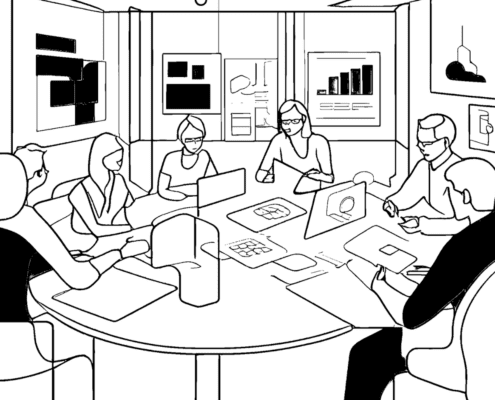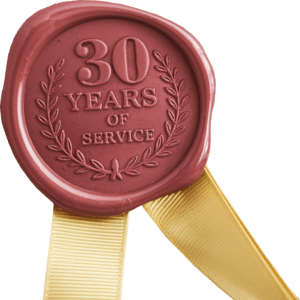Top Training Strategies for Maximising CRM Adoption
Let’s delve into the top training strategies that can help mid-sized Australian enterprises maximise CRM adoption.
Implementing a new Customer Relationship Management (CRM) system is a hefty investment. It promises enhanced efficiency, deeper customer insights, and a boost in sales. But here’s the catch: realising these benefits hinges on how effectively your team embraces the new system. Let’s delve into the top training strategies that can help mid-sized Australian enterprises maximise CRM adoption.
Understand Your Audience
First things first: before you even think about designing a training programme, you need to grasp the diverse needs of your team. Not everyone is on the same page when it comes to technology.
- Assess Skill Levels: Some of your staff might be tech-savvy, navigating new systems with ease. Others? They might need a bit more guidance to get up to speed. Recognising these differences is key.
- Role-Based Needs: Remember, different departments will interact with the CRM in their own unique ways. Your sales team, marketing gurus, and customer service reps each have specific requirements that need individual attention.
Develop a Comprehensive Training Plan
Think of a well-structured training plan as your roadmap to CRM success. Without it, you’re navigating blind.
- Set Clear Objectives: What are you aiming for with this training? Is it simply teaching basic navigation, diving into advanced reporting features, or ensuring the CRM becomes a staple in daily tasks? Defining these goals upfront is crucial.
- Choose the Right Format: Will your team benefit more from in-person workshops, online tutorials, or perhaps a mix of both? Consider what aligns best with their learning preferences to maximise engagement.
Tailor the Training Content
Let’s face it: off-the-shelf training materials rarely hit the mark. To truly engage your team, you need to customise the content.
- Use Real-Life Scenarios: Bring the training to life by incorporating examples and case studies that mirror your company’s actual operations and challenges. This makes the learning experience far more relatable.
- Create Role-Specific Modules: Design training segments that zero in on the specific functionalities each department will utilise. One size does not fit all here.
Leverage Interactive Training Methods
Sitting through hours of lecture-style training can be mind-numbing. To boost learning and retention, make it interactive.
- Hands-On Exercises: Let your team get their hands dirty. Allow them to practise using the CRM during the sessions. Real-time practice beats theory any day.
- Interactive Workshops: Foster an environment where discussions flow, questions are welcomed, and collaborative problem-solving becomes the norm.
Provide Ongoing Support
Don’t make the mistake of thinking training is a one-off event. For sustained adoption, continuous support is vital.
- Establish a Help Desk: Create a go-to resource where employees can fire off questions and get quick answers. This could be a dedicated support team or an online portal.
- Offer Refresher Courses: Over time, people forget. Regular follow-up sessions help reinforce what they’ve learned and introduce any new features or updates.
Encourage Peer Learning
Believe it or not, sometimes your own staff are the best trainers.
- Create CRM Champions: Spot those team members who quickly become adept at using the CRM. Empower them to mentor their peers.
- Facilitate Knowledge Sharing: Set up internal forums, regular meetings, or casual lunch-and-learn sessions where employees can swap tips and tricks.
Incorporate Gamification Elements
Who says training can’t be fun? Injecting a bit of playfulness can work wonders for engagement.
- Use Quizzes and Challenges: Spice things up with friendly competitions. Quizzes, scavenger hunts, or challenges can motivate your team to dive deeper.
- Reward Achievements: Everyone loves recognition. Celebrate employees who hit milestones or show exceptional skill with the CRM.
Monitor and Evaluate Training Effectiveness
You can’t improve what you don’t measure. Regularly assessing your training efforts is a must.
- Collect Feedback: Ask your team what’s hitting the mark and what’s falling flat. Use surveys, feedback forms, or informal chats.
- Track Performance Metrics: Dive into CRM usage stats. Who’s using it? How often? Which features are being overlooked? These insights are gold.
Align Training with Change Management Initiatives
Remember, training doesn’t exist in a vacuum. It’s part of a bigger picture—your overall change management strategy.
- Communicate the Benefits: Don’t just tell your team what to do; explain why it matters. How will the CRM make their jobs easier? How does it contribute to the company’s goals?
- Address Resistance: Change can be unsettling. Be proactive in spotting and addressing any pushback or misconceptions. Open dialogue is key.
Invest in Professional Trainers
Sometimes, bringing in the pros pays off.
- Hire Experienced Instructors: Professional trainers who specialise in CRM systems can offer insights and techniques that might not be apparent to internal staff.
- Utilise Vendor Resources: Don’t overlook the training materials and programmes your CRM provider offers. They know their product inside out.
The last word:
At the end of the day, getting your team to fully adopt the CRM isn’t just about software training. It’s about cultivating a culture that embraces technology as a tool to boost productivity and strengthen customer relationships. By putting these top training strategies into action, you’ll set your organisation on a path not just to adopt the CRM, but to harness its full potential.
Are you ready to ensure your CRM transition is a triumph? Our Melbourne-based team specialises in guiding mid-sized Australian enterprises through the intricacies of CRM implementation and change management. Contact us today to discover how we can support your journey towards greater efficiency and success.


